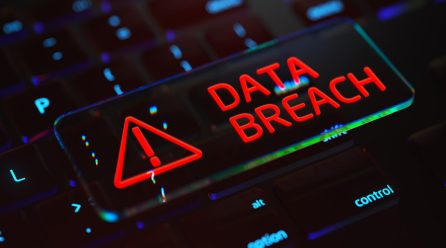Every business is at risk of cyber-attacks – with cybercrimes predicted to cost $10.5 trillion per year. Cyber security awareness means empowering the people connected with your organisation to perform their role while protecting your business from potential security threats – organisations must utilise resources, solutions, tools, training and credentials to deliver knowledge and implement strict processes.
To help cyber security professionals understand the extent of the cyber risk they are facing, and to support organisations to work collaboratively to prevent cyber-crime and increase overall cyber security awareness – this blog will take you on a journey through 10 ways to reduce cyber security risk.
- Leverage a cyber incident reporting tool to help resolve cyber incidents quickly
Cybersecurity attacks are a daily occurrence for big companies – one of the top daily incursions includes phishing attacks accounting for 85%, while 13% are related to human-related ransomware. This is why incident response tools are an effective way to deal with an incident or threat when it happens – and to manage it through to resolution.
Leveraging a cyber security incident reporting tool allows organisations to capture details on an incident – such as when a phishing link was clicked, whose details were used to log, assess & triage the incident – any relating photos, evidence and URLs can then be logged within the tool. The incident can then be escalated accordingly through automated workflows & alerts to inform relevant stakeholders enabling the incident to be resolved and closed. This provides a timestamped log of all incidents that can be used to prove to auditors & regulators that the organisation is managing & resolving incidents effectively. The data within the tool can also be viewed through a series of dashboards & reports – enabling organisations to identify key risk indicators (KRI’s) and prevent future incidents.
- Implement a GDPR framework to ensure compliance with GDPR guidelines
Under the General Data Protection Regulation (GDPR) organisations are required to take measures to protect the privacy of EU residents and their personal data related to transactions that occur within the EU. Failure to comply with GDPR rules can result in reputational damage and hefty fines.
With GDPR being a key concern for organisations, many businesses are turning to cyber risk software solutions that offer out-of-the box functionality to manage compliance with GDPR. These best-practice frameworks have built in workflows & alerts to ensure cyber risks and data breaches are reported and escalated in line with GDPR legislation. Automated reminders flag any missed deadlines or overdue actions – helping businesses to keep up with stringent breach notification timelines.
When selecting a solution to help you manage GDPR requirements, look for platforms that offer an out-of-the-box GDPR framework, making it easy for you to set up a GDPR compliant operating process. Make sure the solution you select allows you to easily map compliance obligations to relevant policies & controls for traceability and change management. Ensure the tool you opt for offers API Integrations – enabling you to feed live transactional data into the solution. This will allow you to set up automated control monitoring to flag unusual data use and set risk tolerances & rules to flag potential problems. Firms that use manual methods to manage GDPR compliance open themselves up to the risk of fines & penalties.
- Create a digital risk register and include a category for cyber risk
Organisations across all industries face a broad array of risks, so it can be difficult to ensure that cybersecurity risks have adequate attention. Risk registers are useful information gathering constructs – helping senior leaders view the full spectrum of their organisation’s significant risks and understand how to best manage them in order to achieve organisational objectives.
By having a dedicated cyber risk register that integrates into your risk management methodology, your organisation can help delegate responsibility for cyber risk management, improve risk identification, track risk owners, and prioritise actions & risk responses based on high, medium or low risk categories. Look for a GRC tool that offers a digital risk register that can be categorised by type to put cyber risk in the spotlight.
These tools make cyber risk everyone’s responsibility by ensuring cyber risks are visible at all levels of your business and can be easily reported on to ensure intolerable risks are mitigated. The extensive dashboards & reports will help cyber risk leaders & boards understand the impact of cyber risk on all business functions
- Set up a control framework to track cyber risk & flag areas of concern
With businesses processing vast amounts of data each day through emails, shared systems, and servers, it would be impossible to track every exchange of data manually to make sure it complies with data privacy guidelines & policies. That is why many businesses are turning to automated control monitoring to spot suspicious transactions.
Setting up a cyber security control framework allows organisations to set rules pertaining to cyber security requirements – triggering notifications to be sent when these rules are broken. Organisations can set rules regarding the access of certain websites or to look for emails sent to & from certain domains. To do this you should choose a cyber risk solution that integrates with your existing IT security framework via APIs. This allows businesses to set rules against live operational data, making suspicious activity much easier to track.
Automated control monitoring makes it easier for security leaders to understand their security posture and that of their vendors – making it much easier to define the processes your business must implement to assess, monitor, and mitigate cybersecurity risk.
- Use a cyber risk management solution that links to other core business systems via APIs
A Ponemon Institute study estimated the average company shares confidential information with 583 third parties.
Keeping architecture and systems secure can seem overwhelming even for today’s most skilled teams. In the contemporary landscape of cybersecurity risk management, one uncomfortable truth is clear – managing cyber risk across the enterprise is harder than ever. Forward- thinking organisations know to base their risk response measures and risk management posture on real data, they do this by using GRC tools with API integrations that enables them to feed transactional and operational data into their cyber risk programme.
Having live transactional data in your cyber risk management tool enables you to detect risk based on real life data including inappropriate internet usage, fraudulent emails, and phishing notifications. This granular level of data makes your risk profile much more accurate. It also enables you to set controls and KRI’s based on this data to get a real time view of your risk posture and address problems early.
- Perform on-going risk assessments for cyber risk to constantly monitor the threat landscape
The level of risk facing your organisation and the threat landscape as a whole is constantly evolving. Routine cybersecurity risk assessments can help your organisation ensure that its security controls are keeping up with emerging threats and continuously providing the best protection possible for your most important assets.
Mature businesses choose to use GRC tools with best-practice risk assessment templates, questionnaires, and forms – that can be done on-line. The results feed into the system, making it easy to run reports to see which areas of the business are exposed to the most risk. Many GRC tools offer score cards and reporting enabling organisations to build a complete view of cyber risk across the enterprise. GRC tools can be configured to send out regular risk assessments to teams via automated emails. Missed actions will automatically be chased up and leaders can view completion data online to understand progress. The consistency of the risk assessment templates makes it easy to report on risk, ensure problems are addressed early, and make risk-based decisions based on relevant data.
- Use dashboards, reports, and bowtie analysis to ensure cyber risks are visible at all levels of your business.
Comprehensive reporting into your cyber risk landscape is essential to understand the different cyber risks your organisation is facing – to enable you to address the most critical or most common problems. Most organisations with a good cyber risk management programme choose GRC software tools with built in dashboards & reports to help them drill down into problem areas and prioritise budget & resources. Leaders can even use the reports to identify problem teams or individuals who are exposing the business to unwanted risk or breaching IT security policies.
Risk teams who rely on manual risk management programmes using spreadsheets and emails will spend a lot of time running manual reports and crunching data. That’s why most businesses choose to use a GRC tool that offers built in dashboard and reporting functionality, this enables them to produce in-depth, drillable reports at the touch of a button. They can perform bow-tie analysis and route cause analysis to understand the source of cyber incidents and set workflows in place to instigate remediating actions.
Opting for a solution with comprehensive dashboards can accurately identify and prioritise cyberthreats for treatment – enabling organisations to manage risk in a systemic and transparent way – providing deep insights to drive decision making and budget & resource allocation.
- Adopt key information security frameworks & achieve cyber security accreditations
Following best-practice IT security frameworks like ISO 27001, GDPR and NIST, or achieving certifications like ‘cyber security essentials’ are great ways to improve your cyber security risk profile. These frameworks are based on existing standards, practices, and guidelines for organisations to better manage and reduce cybersecurity risk.
Deploying a GRC software tool can support organisations to operate in line with these key information security frameworks by using out-of-the-box templates specifically designed to meet all the requirements of these standards. These tools offer workflows and step-by-step processes ensuring employees are operating within the required parameters. Achieving these accolades will ensure you are operating in line with recommended best practices, providing assurance to both leaders and regulators alike. Any areas of non-compliance will be duly flagged to the relevant stakeholder and addressed – keeping your cyber security programme on track.
- Use a best-practice tool to manage your cyber audits
A cybersecurity audit gauges an organisation’s current reality in terms of compliance – and benchmarks it against a specific industry standard. The goal is to evaluate current technology, policies, and procedures at a deeper level to determine if all applicable standards and regulations are being met effectively and efficiently. To ensure you get the most out of your audits and are fully prepared, it is wise to implement a best-practice tool to manage all your cyber audits.
These solutions help an organisation to set up and schedule their audits and allocate ownership. Teams can track results and log areas of non-compliance, these can then be escalated accordingly and worked through to resolution. These solutions offer the capability to track recommendations and audit actions resulting from internal or external audits, with the ability to link back to risks – and having audit actions linked to risk treatments where relevant. These solutions provide complete end-to-end traceability for all audit actions and enable reporting to key stakeholders.
- Use automated policy management tools, to create and store IT policies
Organisations will have a huge amount of IT policies & procedures relating to acceptable use of company equipment, the use of the internet, and rules around the handling of sensitive data. To help organisations keep an up-to-date library of all their policies & procedures many organisations use specialist policy management tools.
Policy management process automation platforms improve operational efficiency of the creation and approval of policies. They provide policy creation templates and when a new policy is uploaded into the tool, teams will enter essential credentials about the policy including, publish date, policy owner, who the policy applies to, who approved it and when it is due to expire. It helps with version control enabling all employees to access the latest policy and even attest to it online. The solutions also make it easy for business leaders to see what policies are live or due to expire. Rules can be set to flag missed approval deadlines or overdue policies. The solution can even support in employee tribunals where an employee breaches a policy – providing online proof of when they were sent the policy and when they attested to it.
Policy management tools significantly mitigate risk by enabling policy and legal teams to systematically reduce the potential for reputational damage. Ultimately leveraging automated policy management tools will enable organisations to build an ethical and defensible compliance programme.
Conclusion
Whether you’re a small business or a multi-billion-dollar corporation, cybercrime could be lurking right around the corner- without the right preventive measures in place, your business could be vulnerable. To combat this threat you need a cloud-based integrated cyber-risk platform to deliver the visibility needed to determine a robust risk posture for effective cyber risk management. Request a demo of the Camms Solution to get started today.
Boards that still needed persuading about the merits of establishing a proactive business-wide cyber risk strategy were left in little doubt with the rapid increase in cyber-attacks which spread during the COVID-19 pandemic and beyond. Download our insightful eBook to understand the core cyber risk threats that today’s businesses are facing, why cyber risk should be top of your Boardroom agenda, and the integral part that a risk management system plays in tackling evolving cyber threats. Read about cyber risks in the energy and utility sectors.





